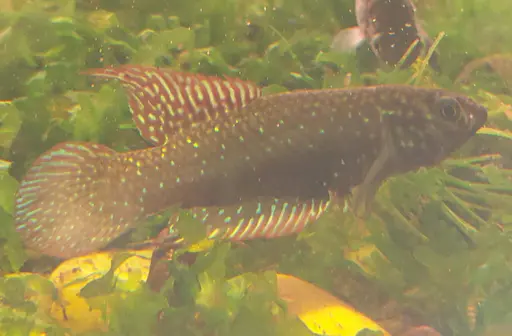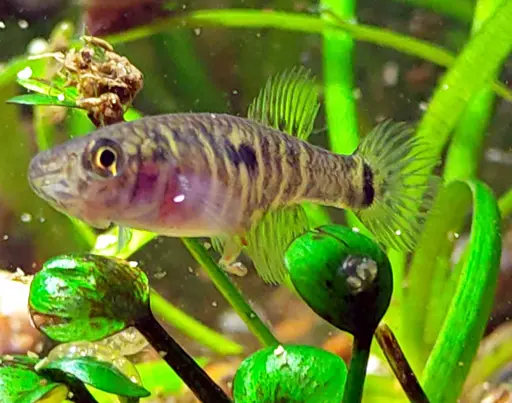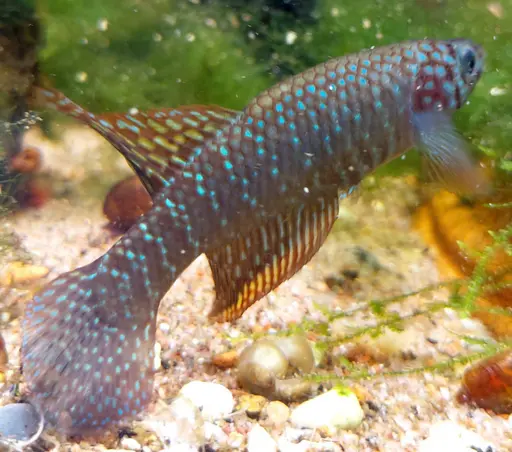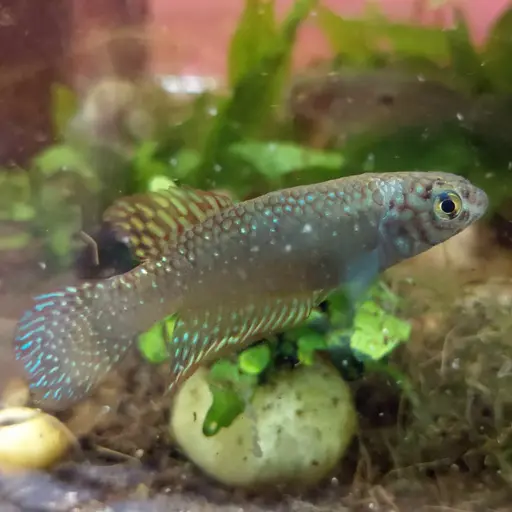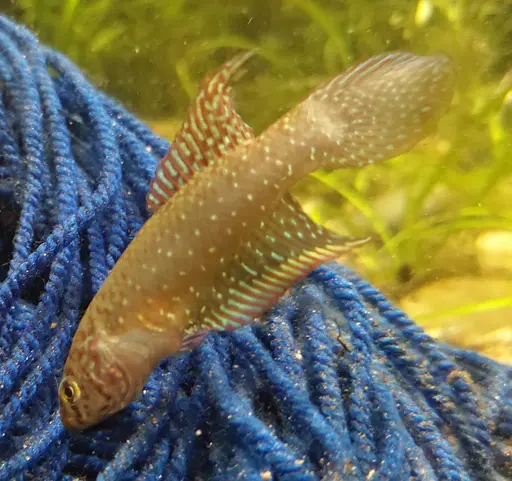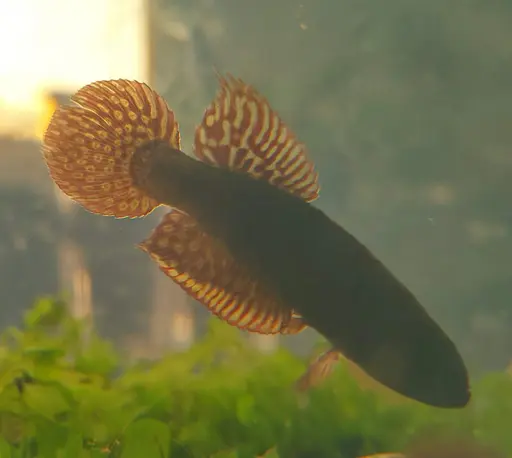Young Nematolebias papilliferus are quite active. But as the fish get older and larger, they exhibit more of a sit-and-wait behavior, and prefer hiding places.
All species of the genusNematolebias are endemic to the densely populated coast of the state of Rio de Janeiro. Consequently, they are all considered critically endangered – previously even considered to be extinct in the wild. N. papilliferus is from the Lagoa de Maricá (Maricá lagoon) basin.
Kaikki Nematolebias-lajit ovat tiheästi asutusta Rio de Janeiro:n osavaltiosta Brasiliassa. Siksi ne ovat kaikki äärimmäisen uhanalaisia - ennen jopa luultiin kokonaan luonnosta hävinneen. Nematolebias papilliferus tulee Lagoa de Maricá:n (Maricán laguunin) vesistöalueelta.
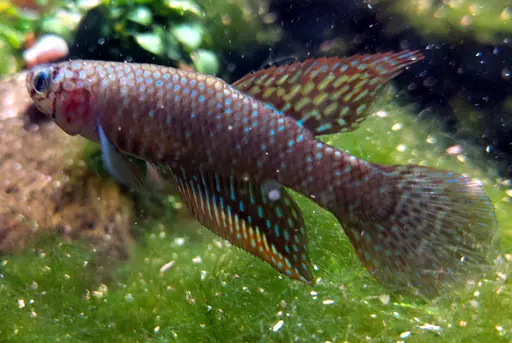
- Population of origin
- Inoã BR-2013 (Brazil)
- Alkuperäinen populaatio
- Inoã BR-2013 (Brasilia)
- Conservation status
- Critically Endangered (CR)
- Uhanalaisuus
- Äärimmäisen uhanalainen (CR)
- Aquarium setup
- Not an active swimmer, so gentle water flow. For example, a sponge filter connected to an air pump. A pair can be housed in a 20-30 L aquarium. A larger group in a larger tank - for example, 100 l, 75 cm long. Plants and other hiding places.
- Akvaario
- Ei vilkas uimari. Parin tai kolmikon voi pitää 20-30l altaassa. Mutta ison koon vuoksi, suurempi parvi vaati isomman altaan. Vaikka 100l, tai 75 cm pituudeltaan. Kasveja sekä muita piilopaikkoja. Lievä virtaus.
- Temperature
- Room temperature, 19 - 26 °C
- Lämpötila
- Huoneenlämmössä, 19-26 °C. Ei vaadi lämmitystä. ~7
- Water hardness
- soft to moderately hard, < 10 °dH
- Veden kovuus
- Pehmeää tai keskikovaa, < 10°dH
- Maximum size
- 11 cm (but in the aquarium remains much smaller, 6-8 cm)
- Maksimikoko
- 11 cm (mutta yleensä akvaariossa kasvaa paljon pienemmäksi, 6-8 cm)
- Maximum lifespan
- Being an annual species, not much longer than a year.
- Maksimielinikä
- kausikillinä 1-1½ v akvaariossa.
- Feeding
- Not picky. Readily accepts dry, frozen and live foods
- Ruokinta
- Feeding
- One of the easiest killies to feed. Not picky at all. Readily accepts dry, frozen and live foods
- Ruokinta
- Kaikkiruokainen. Ei ole nirso lainkaan.
- Taxonomy
- A congener of the Rio Pearlfish (N. whitei). According to current classification the genus Nematolebias contains three species: catimbau, papilliferus and whitei. A fourth species, Nematolebias myersi, has been removed from the genus and reclassified as Xenurolebias myersi.
- Taksonomia
- Viiriviuhkaevän (N. whitei) lähisukulainen. Nykyisen luokittelun mukaan Nematolebias-sukuun kuuluu kolme lajia: whitei, papilliferus ja catimbau. Kupariviuhkaevä (entinen N. myersi) on siirretty Xenurolebias-sukuun (eli nykyään X. myersi).

- Viljely
- Breeding
-
Peat or coco coir as spawning medium. Incubation time is 6-10 weeks, or longer - depending on temperature. Viable eggs may still exist even after a year and several cycles of wetting and drying.
From time to time, it is advisable to check that the peat in storage does not dry up completely. I do it once a month. If needed, humidity can be added with a mist sprayer.
Kutualusta: turve tai kookoskuitu.
Munien inkubaatioaika: 6-10 viikkoa, tai pidempään - riippuu lämpötilasta. Munat saattavat selvitä turpeessa huomattavasti pidempäänkin, kuukausista jopa vuosiin.
Välillä voi varmistaa, että turve ei mene rutikuivaksi (voi kosteuttaa kastelusuihkupullolla tarvittaessa).
